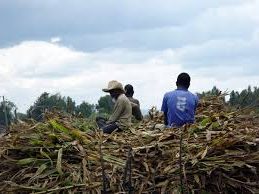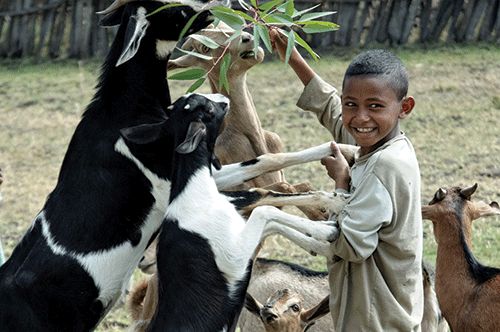Investment in livestock agriculture in Ethiopia has the potential to halve poverty, improve the food security of rural people and make livestock an increasing contributor to GDP growth. Yet the high cost and low availability of good quality animal feed is perhaps the most critical constraint to increasing livestock productivity.
Poor feeding limits the ability of an animal to reach its genetic potential, so livestock grow slowly, produce little milk, are susceptible to diseases and produce few calves. If managed and fed properly, the average milk yield of a Horro cow at peak lactation on a traditional farm could more than double (Tolera 2012). Moreover, poor feed reduces the impact of other interventions, such as artificial insemination and oestrus synchronization, to boost livestock productivity. To meet its targets, the Ethiopia livestock master plan (LMP) gives feed availability a high priority.
Moving targets
The LMP sets out ambitious year 2020 targets for several livestock value chains—crossbred dairy cows, red meat milk
and feedlot, and poultry. These are designed to meet rapidly-growing demands for agricultural commodities, especially meat, milk and eggs. The 2020 targets aim to increase meat, milk and egg production by 58%, 83% and 828% respectively above 2012/2013 totals. These can only be met through secure year-round feed supplies.
These increases, as well as the expected rise of the crossbred cattle population to more than four million, will require enhanced forage and feed production and feeding services, including improved pasture productivity practices, and training for farmers on livestock feeding and forage production.
Transforming the livestock sector through feed interventions
Overcoming forage feed shortages in highland areas
1. Facilitate the adoption of more productive forage production technologies, including: over-sowing with
improved grass and legume species and bush clearing and thinning from grazing fields, the use of improved
forage varieties with better management techniques, and crop-residue quality enhancement using urea and
urea-molasses mixture treatment.
2. Make forage seed production training available and encourage regional bureaus of agriculture and other
actors to train development agents in the use of forage production technologies.
3. Support MoA and state research institutes to provide capacity-building support to research centres and
seed enterprises.
4. Encourage federal and regional government officials and investment agencies to make land—that is fertile, irrigable and close to markets and credit services— available to private investors or public parastatals
interested in forage seed and feed production, ensuring sufficient supply for emerging market-oriented livestock operations

